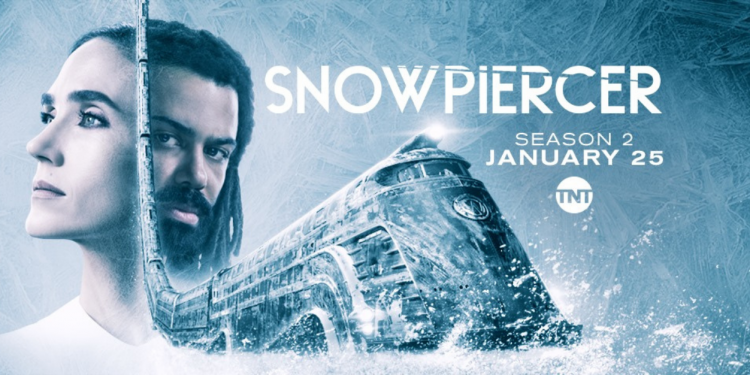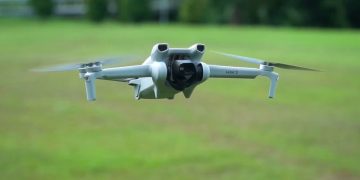Based on the 1982 French graphic novel Le Transperceneige, as well as the 2013 film by Director Bong Joon-Ho, the television adaptation of Snowpiercer aired earlier last year. Following the critical acclamation of Director Bong’s film, many looked forward to seeing the same Machiavellian style of violence and characters with gripping survival instincts in TNT’s Snowpiercer.
But what we got from the series is unexpectedly mellower compared to the Director Bong’s Snowpiercer. Oddly enough, even with the same setting and context, the series fails to lend gravitas to its character arcs, and despite the high body count, the stakes just don’t feel high enough. Now, as the show progresses into season two, we have to make up our minds on whether we should tune in for another ten episodes.
The world of Snowpiercer
An attempt by scientists to counter global warming inadvertently creates a second ice age. As the Earth becomes so cold that it is no longer habitable, a man named Mr Wilford builds a perpetually moving train, the “eternal engine” Snowpiercer. The passengers onboard are segregated, with the elite in extravagant front-cars and the poor (also known as tailies), who fought their way on board without paying for tickets, are stuck in squalid tail compartments controlled by armed guards.
A brief synopsis of Snowpiercer season 1
The first season of Snowpiercer is set in 2021, 7 years after the Earth has frozen over. Just as the tailies attempt a revolt, led by the world’s only surviving homicide detective, Andre Layton (Daveed Diggs), Layton is called up to the front of the train to investigate a murder in third-class. Using the knowledge he gains about the front cars of the train, Layton plans an uprising to make Mr Wilford’s train one for the people.
Meanwhile, Melanie Caville (Jennifer Connelly), the powerful head of hospitality in first-class, maintains an illusion that she is receiving orders from the elusive Mr Wilford, whom many consider an almost God-like authority. Secretly, however, Melanie runs the train, after usurping Mr Wilford years ago to prevent him from wasting the Snowpiercer’s resources with his decadent lifestyle.
From its first season, Snowpiercer makes it clear that it is not here to judge between wrong or right. Instead, the show makes a simple statement that desperation is the key to victory. And as the leader of the tail meets the leader of the train, the question is, “Who is more desperate to survive?”
Tipping the social ladder on its side
The train is essentially a not-so-subtle metaphor for a classist social hierarchy. While those in the first-, second-, and third-class cabins of the train bought tickets to board the train, the tailies were not taken into consideration when allocating resources for the train’s inhabitants. As a result, they are packed in the tail and given mere scraps to survive on, forced to resort to cannibalism and mistreated by the armed guards.
This idea of the train flips the social hierarchy on its side. Instead of a vertical climb, these individuals are now standing on the same ground. Without a justifiable reason why the rich should be given priority over others, the resentment of the tailies leads to the revolt in the premiere episode of the first season. To its credit, Snowpiercer evaluates the idea of equality from different perspectives, and questions whether it is truly desirable in the makings of a productive society.
Pandemonium
The series features the same depictions of violence as its film counterpart. The tailies’ punishments for misbehaviour come in the form of having their limbs being frozen and shattered. Poor people are easily maimed or executed, while the rich, whose wealth keeps the train moving, get away with their crimes.
But despite the use of similar plotlines, the series fails to give meaning to its violence. Each fight, each death and even the sacrifice of one of the show’s leading characters, Josie, fails to trigger any deep emotion.
While the unpredictable nature of its characters had the potential to create the element of surprise, it strangely comes off as anti-climactic. Even the initial revolt is quashed almost too quickly, ending by the first episode, resulting in some tailies being put into medically-induced comas as punishment.
A crucial question hence remains even after the tailies have won the battle: So what? The show depicts Layton’s victory with no glory. A classist statement it may be, the tail is made up of a mostly uneducated group, which includes criminals. The ransacking of first-class cabins when the tailies manage to usurp Melanie signifies that Layton has essentially brought a bunch of criminals to burglarize the homes of the rich, which makes him and the tailies not much better than the snobs from first class.
Far from the glorious, united image of victory is a picture of chaos. Perhaps merely seven years on the train is not enough to bond the tailies, who are missing the sense of teamwork that binds the tailies together in Director Bong’s Snowpiercer. Their motto- “One tail”- rings empty, as the tail is not much more united than the rest of the self-serving members of the train.’
Nobody to root for
Both the film and the TV series operate on the same storyline, which involves tailies attempting to fight towards the front of the train. But while Chris Evans’ Curtis was a smart leader and an anti-hero to root for, the two main characters of the television series are not as easy to get behind.
Melanie’s morally-questionable choices and Layton’s idealism are highlighted as their respective hamartia. Although Melanie presents inequality and discrimination in her attempt to maintain order, with Layton we have anarchy. Even after the successful revolt, after which Melanie relinquishes her control over the train to Layton, the latter is incapable of controlling his people, setting up his tenure as train leader to be a tough one in season two.
The characters are complicated, well-acted, and their self-serving motivations should be interesting, but fail to be meaningful. In the end, it is still hard to rally behind either Layton or Melanie, with both their flaws equally frustrating.
Is season 2 worth the watch?
For a show that we had to wait years for, Snowpiercer’s arrival does not pack much of a punch. Perhaps it is the way the dialogue feels contrived, the editing or the direction of the storyline overall, there is something about the series that just doesn’t come off as intelligent as the film that inspired it, which sets an inconsistent tone for season two.
But as the last season ended on a cliffhanger, introducing the arrival of another train-Big Alice, there are new elements to look forward to that might solve the issues of its inaugural season. Perhaps with Mr Wilford’s arrival, there will be the presence of a greater evil, that will motivate us to get behind Layton or Melanie, or both, if the two can put aside their differences. And should the show at any point in season two decide to lean towards either Melanie or Layton ever so slightly rather than straddling moral ambiguity, we would have to applaud its self-awareness and give it a second chance.
Season two of Snowpiercer premieres on Netflix US today, 26 January.
Join the conversations on THG’s Facebook and Instagram, and get the latest updates via Telegram.














